Professor Hiroyuki Matsuda (UNESCO Chairholder) Feb 19, 2025
In order to consider the possibility of registering Manazuru Prefectural Park as a Biosphere Reserve (BR), former UNESCO’s MAB Programme Chief (former professor at Yokohama National University) Dr. Miguel Clüsener-Godt and his wife, along with Matsuda, visited Manazuru Town on February 19, 2025. Dr. Ryota Mizui, Representative Director of NPO Discover Blue, and Chief Curator of Kanagawa Prefectural Museum of Natural History, Wataru Onishi, led the tour from Manazuru Station.
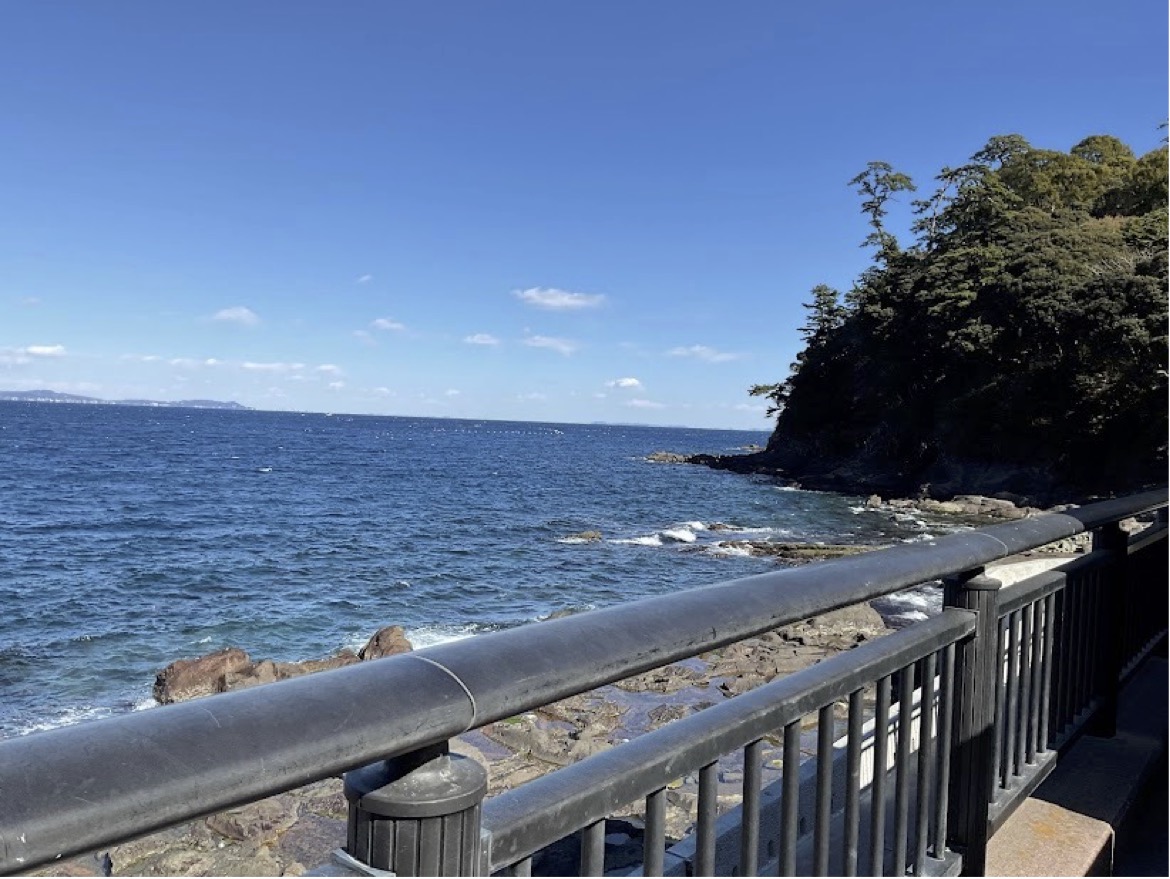
After lunch near Manazuru Uoza (fish market), we were given an explanation of Ohayashi Forest from Kotogahama. About three centuries ago, pines were planted as an official forest in an area that was mainly grassland, and about 150 years ago camphor trees were planted, but neither of these have naturally regenerated, and broad-leaved trees such as red machulus and chinquapin oak (Castanopsis sieboldii) are on the rise. Pine trees have naturally regenerated on the cliffs. This forest was designated as a fish-bearing forest early on (in 1904) under the Forest Act enacted in 1897.
Next, we went to the Yama no Jinja (Mountain Shrine), where it was explained that fishers have maintained the forest since ancient times, believing that enriching the forest would lead to enriched fishing grounds, and have worshiped the shrine together with stoneworkers, who will be described later.
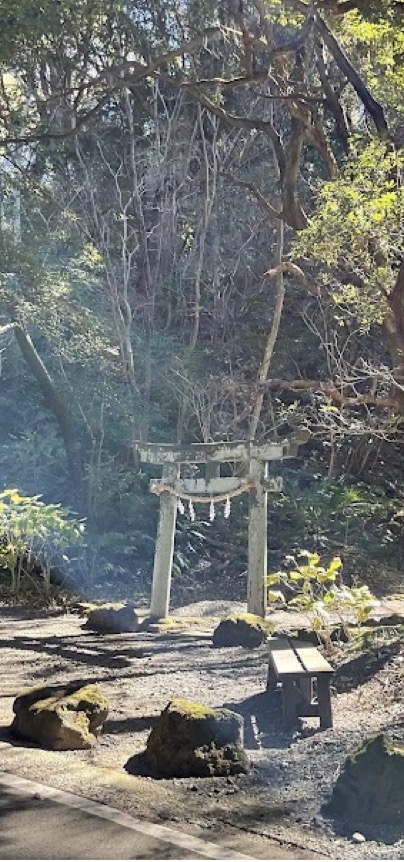
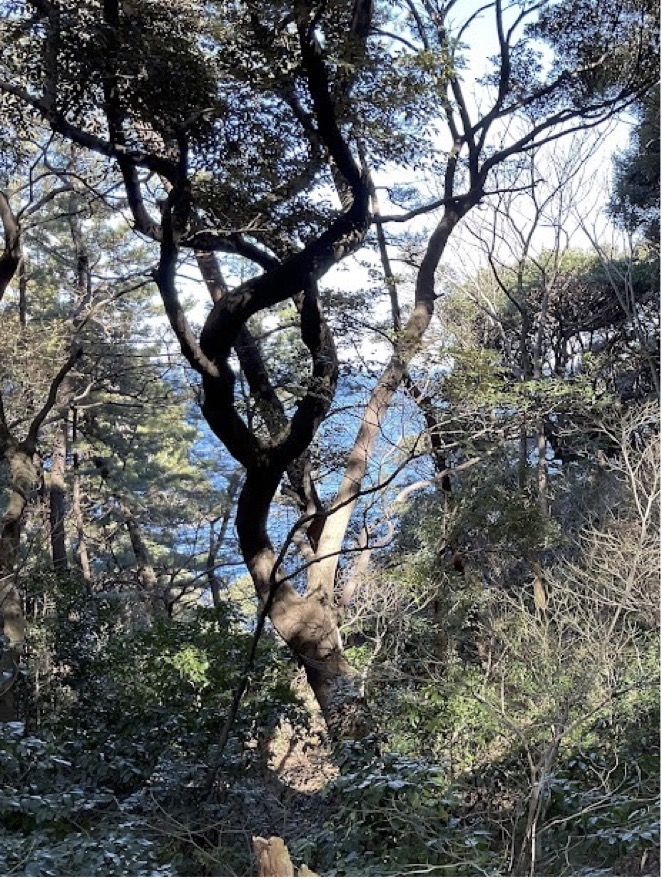
overlooking the sea with set net fishing ground
We then went to the Municipal Endo Shell Museum, where Dr. Mizui explained about Manazuru’s nature and activities such as the “Marine School”. Manazuru Town Tourism Section Chief Asakura Yoshitake, Section Chief Takada Daisuke, and Mr. Kitamura Kanta were also in attendance, and accompanied Dr. Mizui and Chief Curator Onishi on their tour of the prefectural park trails until the end.
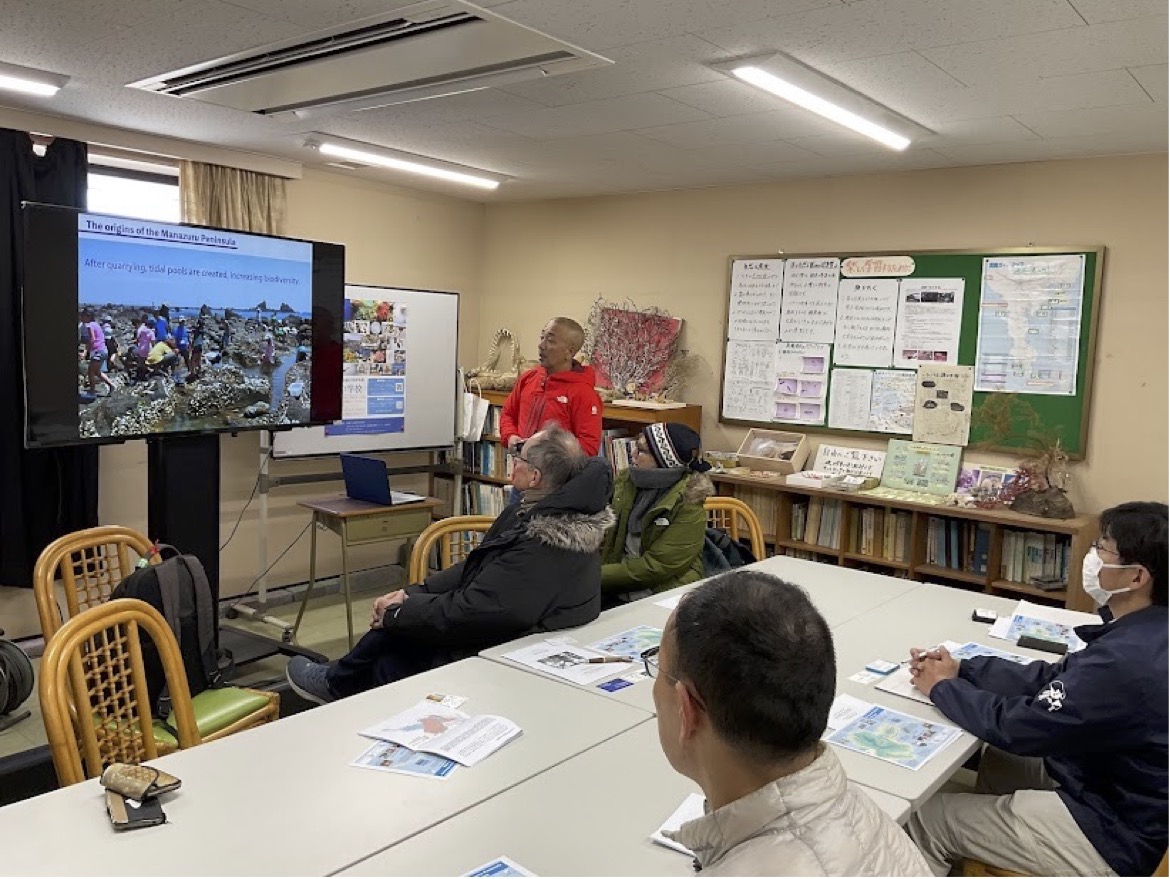
After Dr. Mizui’s explanation, Mr. Matsuda gave an overview of biosphere reserves, which aim not only to protect nature in the core area, but also to become a “model of a sustainable society” that uses natural resources in transition areas, and to evaluate activities to regenerate nature in addition to protecting pristine nature. Regarding the conditions for the inscription of Manazuru Prefectural Park, Matsuda explained that although the Type 1 Special Area of the prefectural park does not fall under the core area according to the current “basic concept” of the Japan MAB National Committee, there is a possibility if a reason can be found, and that UNESCO would welcome the inscription including the marine area. Matsuda also explained that it is important to explain the recent efforts of the town of Manazuru to leave it to natural succession instead of maintaining the current pine and camphor forest.
We walked along the promenade established by the prefecture, blessed with clear skies. We also saw the monument commemorating the planting of the 1,000th pine tree in 2013, but it was explained to us that regenerating pine species is not easy and that pine wilt, caused by the pine tree nematode, has progressed. In the past, they had put tubes on the trees and sprayed chemicals from near the top of the trees, and since then they have been preventing this by injecting chemicals. In recent years, they have changed their policy to allow the pine trees to die and let them regenerate naturally (see also Manazuru Town Forest Conservation Council 2018). Pines are sun-loving trees that grow naturally in open environments, and they do regenerate naturally on cliffs, but broadleaf trees would probably be more suitable as fish-bearing forests. It has also been pointed out that past chemical spraying has had a negative impact on insect fauna. Chief Curator Onishi pointed out the need for measures to address the spread of the Chinese fan palm (Livistona chinensis), which is native to only western Japan.
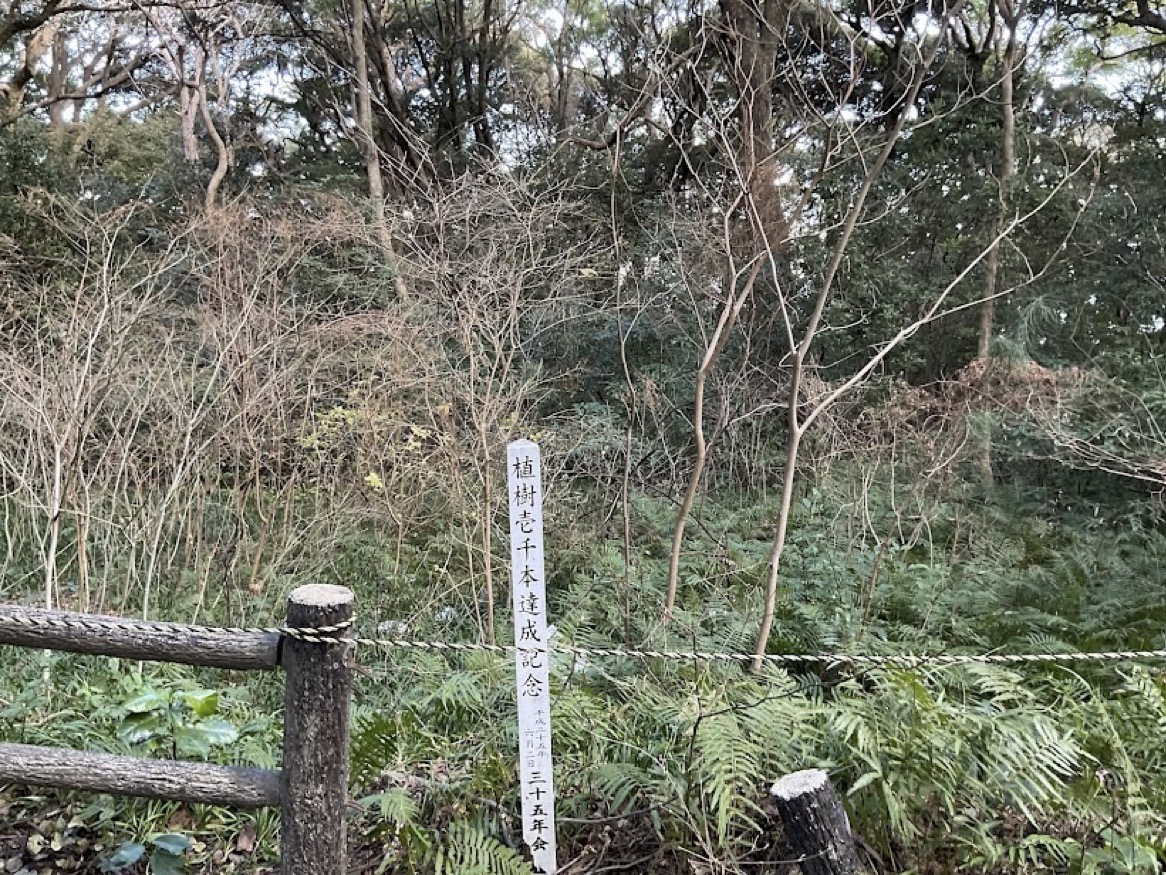
There are no more pine trees left
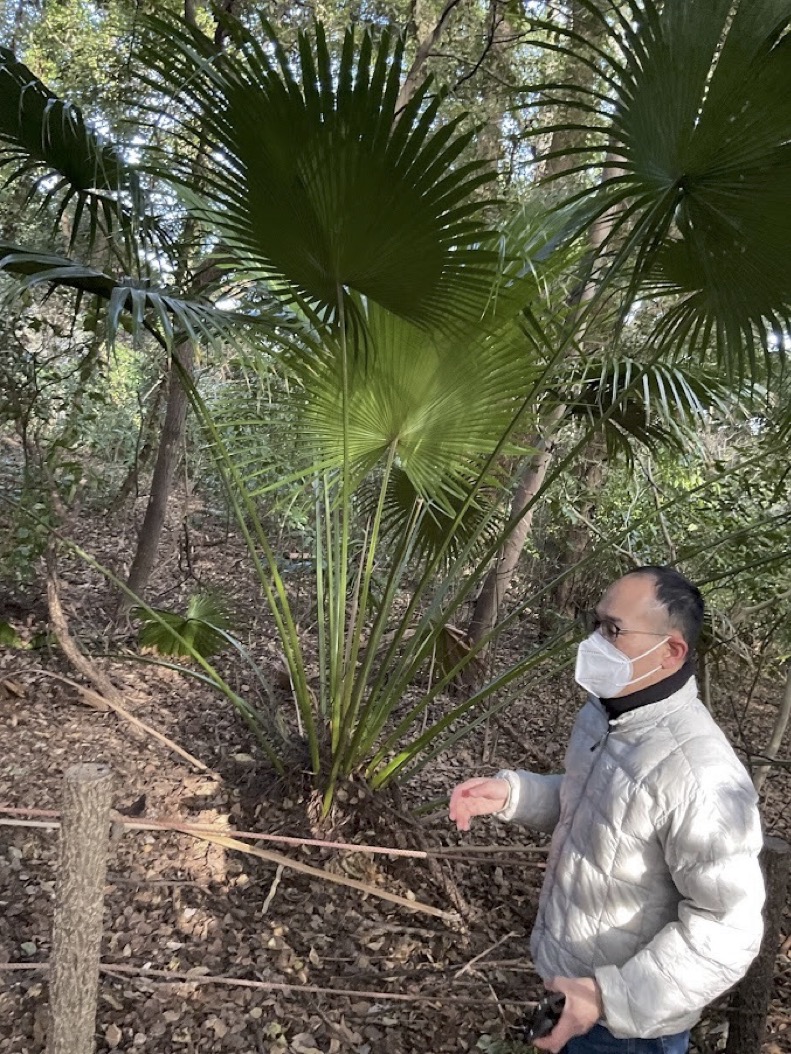
Chinese fan palm and Mr. Onishi
Manazuru Town is home to components of the Hakone Domestic Geopark, and there are several explanatory signs for the geopark.
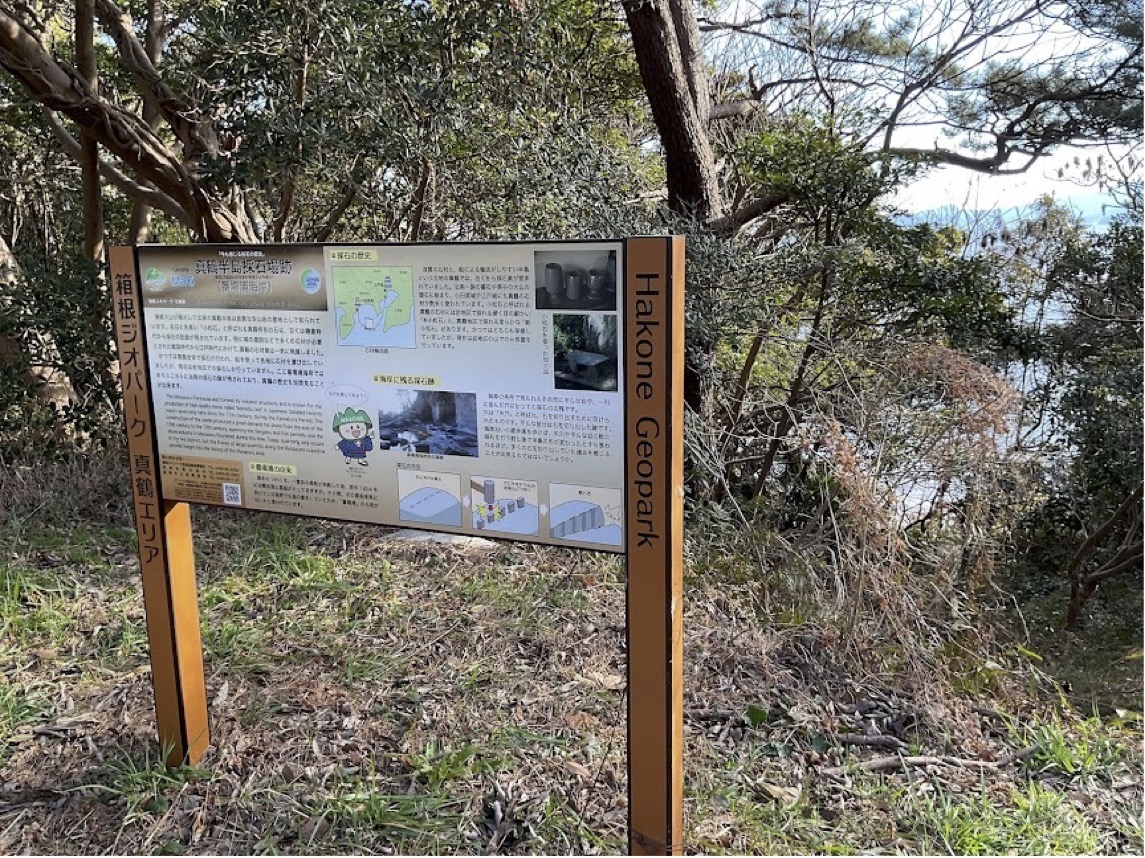
Manazuru was also the site of a quarry for stone used as a slaughterhouse for Edo Castle. A large evergreen broad-leaved forest can be seen growing on the hill above the remains of the quarry, as seen from Banbaura Beach.
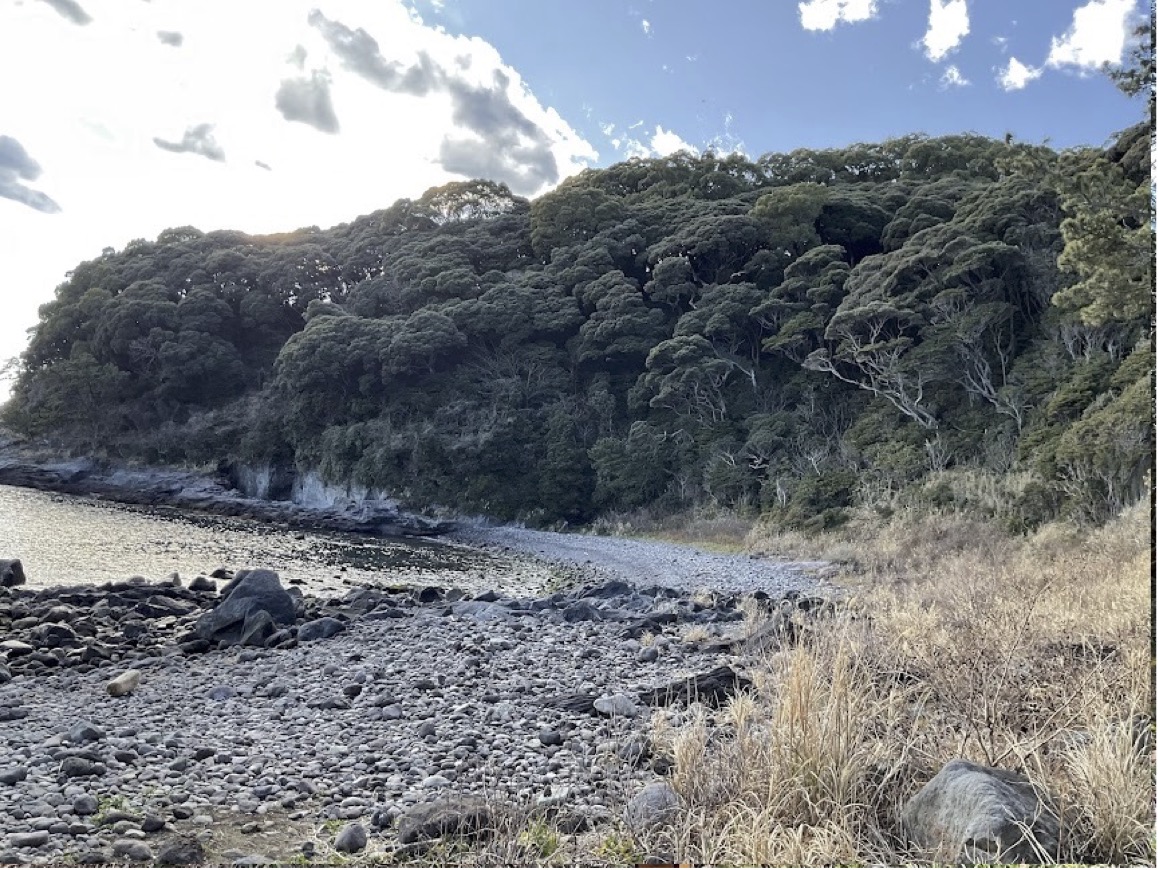
Finally, we returned to the museum for further discussion. Professor Clüsener-Godt explained the procedures for registering as an biosphere reserve.
References
- Manazuru Town Forest Conservation Council (2018) Forest Conservation Policy – Basic Concept of Forests [in Japanese; For the English version, please contact Dr. Mizui or Matsuda]. – https://www.town.manazuru.kanagawa.jp/material/files/group/18/ohayshi-houshin.pdf
- Hiroyuki Matsuda (2025/2/19) Potential of Manazuru Biosphere Reserve.
PDF https://ecorisk.web.fc2.com/2025/250219MNZ_vKuWZPe6Qr.pdf
Video https://youtu.be/-ZoiUL6W9PM
